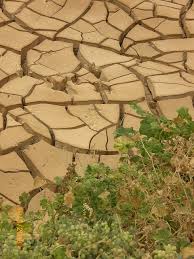 With California experiencing one of the most severe droughts on record and Governor Brown having declared a state of emergency, it is no wonder many gardeners have decided to let their gardens go fallow this year. The only problem with that philosophy is that by planting a garden this year, could be one of the wisest thing gardeners can do, to actually save water. There is a misunderstanding that growing a garden takes a lot of water. On the contrary, gardens when done properly, do not require much water at all.
With California experiencing one of the most severe droughts on record and Governor Brown having declared a state of emergency, it is no wonder many gardeners have decided to let their gardens go fallow this year. The only problem with that philosophy is that by planting a garden this year, could be one of the wisest thing gardeners can do, to actually save water. There is a misunderstanding that growing a garden takes a lot of water. On the contrary, gardens when done properly, do not require much water at all.
The irony, in this misnomer, is that factory farms and large farming operations, intensely and often improperly use water to not only irrigate crops, but also to wash and prepare veggies for market. A backyard garden would use a dramatically less amount of water to grow and wash the same vegetables.
FOOD PRICES
In the shadows on this drought, it is also estimated that food prices are on the rise. With California being one of the largest global producers of vegetables, fruits and nuts, it is only natural that prices will reflect the effects of this drought. It is also speculated that it will have a two-year impact on tree crops, such as fruit and nuts, since its takes these crops longer to recover from the drought.
Despite the surge in the fresh fruit … and ongoing concerns regarding the effect of the California drought, farm-level fruit prices fell 6.8 percent in March, and farm vegetable prices rose 1 percent. The timing of the effects of the drought on prices … depends heavily on the harvest period for each
commodity; such effects may not occur until the Summer or Fall of 2014.
This forecast is based on an assumption of normal weather conditions; however, severe weather events could potentially drive up food prices beyond the current forecasts. In particular, the ongoing drought in California could potentially have large and lasting effects on fruit, vegetable, dairy, and egg prices …
WATER
We have come a long way in water technology to design and create systems that inherently are water efficient and more 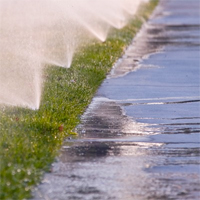 effective in their purpose, for example to water plants and not sidewalks.
effective in their purpose, for example to water plants and not sidewalks.
By integrating a drip system in your own garden, you are not only effectively watering your plants, by targeting their roots, but you are also using a system that conserves water. Not all gardens will have the ability to have drip installed, but there are further alternatives in water technology to be water wise. Not all nozzles are created equal. Using nozzles that properly aerate and distribute water can be a simple solution for those who enjoy hand watering their gardens.
Consider collecting the water, that is wasted, when you are waiting for the water to heat up to water your garden. Do you have aerators on your kitchen and bathroom faucets? Another simple water saving solution under $2.
Think of your stormwater and greywater, are you properly managing the water on your property? These days, installing rain barrels to a downspout is a simple and cost-effective solution to re-purpose our rainwater. Creating burms and swales helps navigate our storm water from ever even leaving our property and allowing it to properly be retained in the soil and replenish our water tables. Rerouting the waste water from your washing machine is another effective solution to water your trees. Best to use biodegradable detergents and naturally based detergents, if you are considering this option or are already implementing it.
SOIL
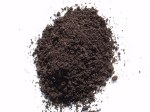 Building soil in your garden is the key to healthier crops, better water retention and drainage, better soil structure and less susceptibility to pests and disease. Healthy soil is the foundation of every garden and farm.
Building soil in your garden is the key to healthier crops, better water retention and drainage, better soil structure and less susceptibility to pests and disease. Healthy soil is the foundation of every garden and farm.
There are many simple cost-effective ways to add organic matter into your garden, such as planting a cover crop in the fall and using it as green manure. Other simple ways are sheet mulching, adding compost and integrating well-rotted manure. Mulching is another excellent way of building organic matter, suppressing weeds, preventing rain compaction, but most of all, it will retail moisture in the soil. There are many types of mulch, anything from grass clippings to leaves (oak leaves in particular make an excellent mulch). If you choose to buy your mulch and wanting to buy straw, make sure that you are buying straw and not hay. Hay will have seedheads that eventually will sprout in your garden. Maintain the 5% – 6% organic matter rule, as too much of it can over stimulate the microorganisms in the soil which can cause soil fertility to decline.
Soil that is properly tended, without chemicals and with the microbiology of the underground flora in mind will support and replenish water tables.
Saving seed this year is going to be another simple step in adapting, your vegetables to be being able to thrive on less water, if you replant them year after year. The more you save and adapt your seeds, the more resistant the seeds will be to pests and disease and adapted to your specific local climate and soil. In turn, if there is inclement weather, your crops are more likely to be resilient and able to properly respond to changes, such as drought.
Another way to save water in your garden or farm is to start exploring dry farming. With a long history, Mediterranean countries have been dry farming olives and grapes for thousands of years, producing some of the finest wines and olive oils. It is the process of establishing your crop, on the onset with irrigation and then removing it. This stress causes the plant to reach deep into the water table to find its water and re-hydrate itself. What happens in the process is that by restricting the water intake, the fruits have less water content, this naturally raises their sugar content as well as other enhancing flavor compounds, creating scrumptious fruits and vegetables.
If dry farming interests you, there things to keep in mind. You should know your water table levels, be assured that the plants you plan on dry farming are more drought resistant and lastly dry farm from the beginning. Varieties that thrive in this method are grapes, olives, pumpkins, melons, tomatoes, garbanzos, apricots, apples, grains, potatoes, watermelons, cantaloupes and winter squash.
This may be the beginning of seeing the possibilities of growing food in a year of drought, while also empowering you to take a deeper look at where water conservation techniques can be integrated in your home, whether you own or not.
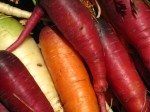
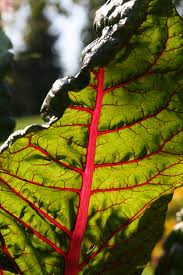
Discussion
No comments yet.